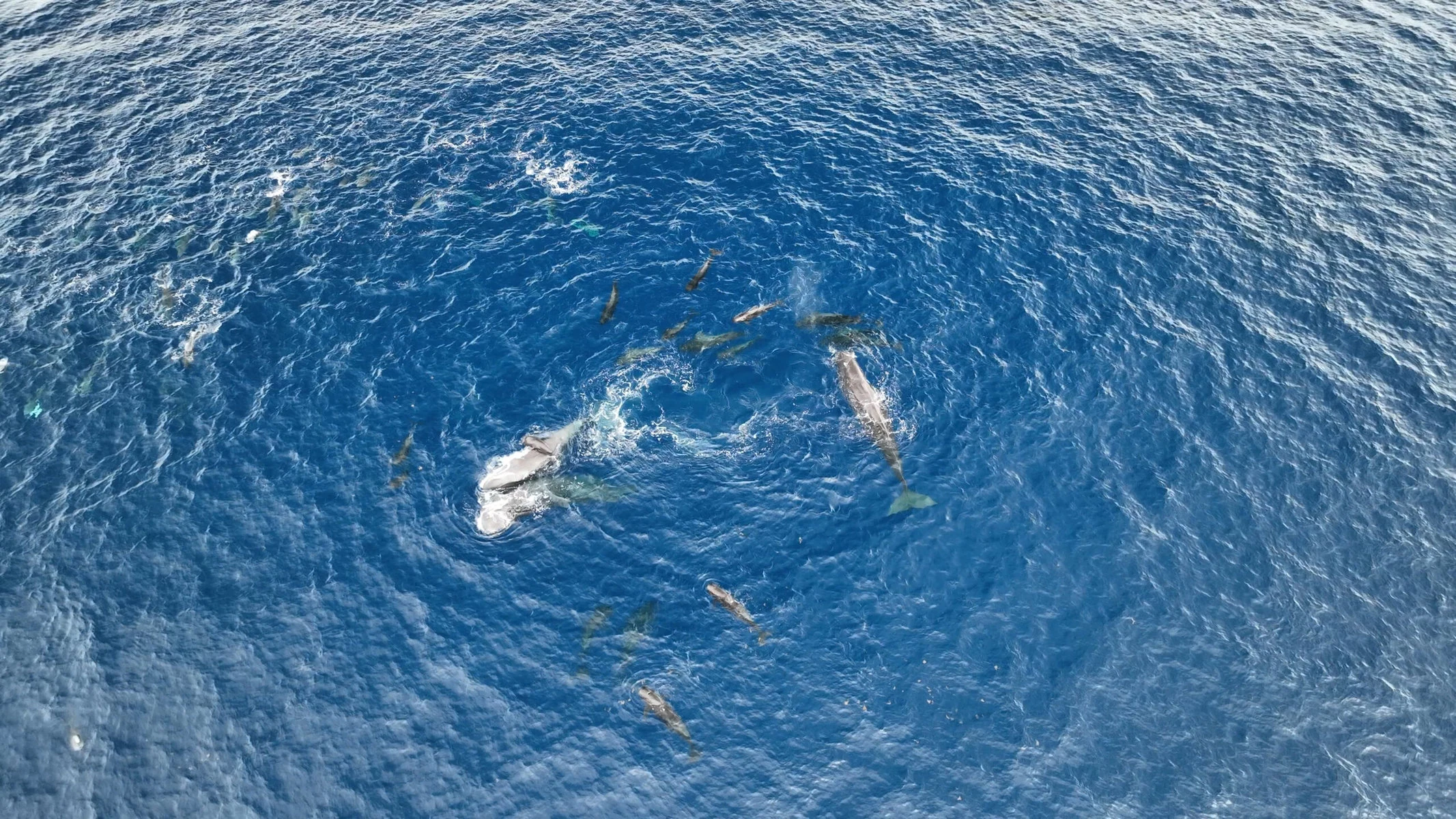How Do You Say ‘Danger’ in Sperm Whale Clicks?
This is part one of a two-part series. Read part two here.
Sperm whales don’t sing melodious, moaning whale songs like their humpback cousins. The biggest predator on the planet communicates in clicks, called codas. Some compare the sounds to popping popcorn or frying bacon in a pan. For CUNY biologist David Gruber, it resembles “morse code or techno music.”
Gruber, the founding president of Project CETI, the Cetacean Translation Initiative, often listens for hours in his New York office to the sperm whale chats his team has recorded in the Eastern Caribbean.
 Project CETI records sperm whale codas around the Eastern Caribbean island of Dominica. Courtesy of Project CETI
Project CETI records sperm whale codas around the Eastern Caribbean island of Dominica. Courtesy of Project CETI
CETI focuses on sperm whales for several reasons. One reason is that it can build on the audio recordings that whale biologist Shane Gero has already been collecting for 15 years with the Dominica Sperm Whale Project. Gero was able to show that sperm whale families have different dialects, much like British and American English. “Another reason is that the sperm whale has been vilified as a killer, Moby Dick as a leviathan,” Gruber says. “Meanwhile it could be one of the most intelligent, sophisticated communicators on the planet.”
While the humpback whales sing their soprano songs primarily for mating, sperm whales are communicating to socialize and exchange information. CETI has already discovered that the communication patterns are complex. “Their codas are clicks, they are like ones and zeros, which is very good for cryptographers,” Gruber explains. “The combination of advanced machine learning and bioacoustics is slated to be the next microscope or telescope in terms of our ability to really listen more deeply and understand life at a new level.”
Reasons to Be Cheerful · Sperm Whales
CETI’s team operates a giant whale-recording platform from a 40-foot sailboat off the coast of Dominica, a volcanic island in the Caribbean with a stable sperm whale population. Both by tagging the whales and installing whale listening stations with microphones dangling deep down into the ocean on floating buoys, CETI is recording several terabytes of data every month. The scientists are creating a three-dimensional interactive map of the whales within a 20-kilometer radius, combining sounds with data such as the whales’ heart rates.
The post How Do You Say ‘Danger’ in Sperm Whale Clicks? appeared first on Reasons to be Cheerful.